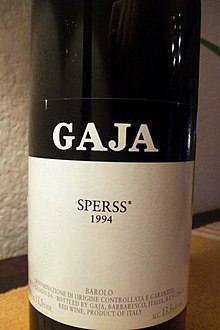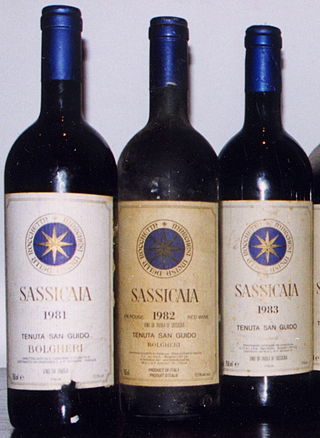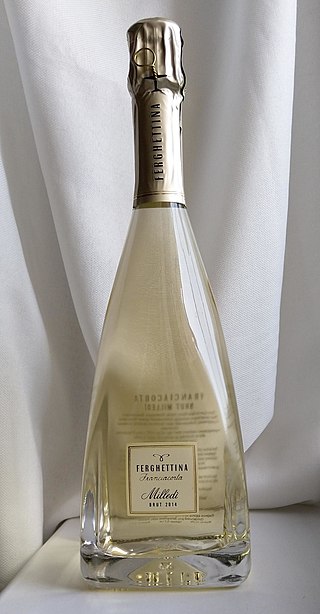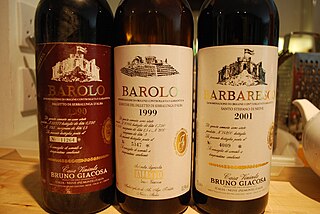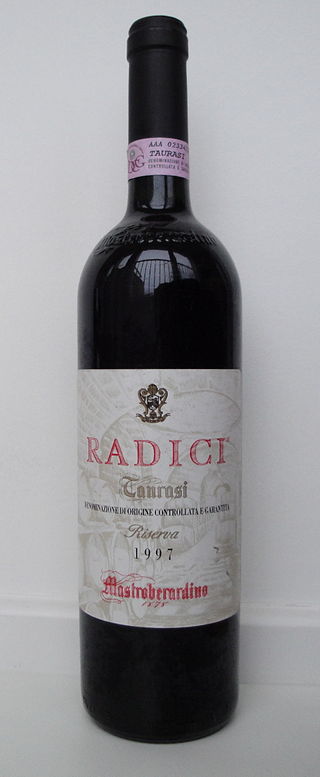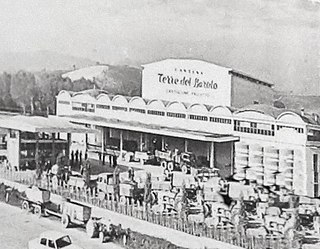In 1937, Giovanni Gaja, grandson of the founder, first put the name Gaja in big red letters on his bottles' labels. [6] The firm progressed following World War II as Giovanni Gaja made a significant series of vineyard purchases in terms of scale and vineyard quality. Also cited as an important influence to the firm's early success is the mother of Giovanni Gaja, Clotilda Rey, who instilled the principles of working to achieve high quality to attract the desired clientele, and set high prices to manifest the prestige of the product. [10] [11]
Angelo Gaja
Angelo Gaja, (born 1940) great-grandson of Giovanni Gaja, began his career with the company in 1961 at the age of 21. [10] He had completed his studies in wine making at the Enological Institute in Alba and at the University of Montpellier in France, and held a degree in economics from the University of Turin. [3] [12] At the time there were only about 100 people producing Barbaresco and Barolo. Thanks to his family's acquisitions, the young Gaja was already a major vineyard owner in Barbaresco. [1]
Following several trips to France and ongoing disputes with his father, Angelo Gaja introduced several practices to the region over the following years that were revolutionary to the vinification of Nebbiolo. In 1961 he began the first experiments with green harvest or diradamento. Single vineyard production was started with Sorí San Lorenzo in 1967, Sorí Tildin in 1970 and Costa Russi in 1978. [1] Since 1970 Gaja has employed the eminent oenologist Guido Rivella. [1] [3] Gaja is also credited with introducing to Piemonte malolactic fermentation, from the 1975–1976 vintage implementing French barriques ten years after initial experiments, [10] bringing in thermo-controllable fermentation equipment and French grape varieties, and eventually grand cru prices. [1] [12] Giovanni Gaja opposed his son's use of new barriques and the decision to plant French grape varieties. [6]
In 1977 Gaja formed Gaja Distribuzione, an importer and distributor of wines and wine accessories from other countries.
In 1978 the Darmagi vineyard in Barbaresco, a prime Nebbiolo site, [1] was planted with Cabernet Sauvignon. Gaja stated this was done not because of his love for Cabernet Sauvignon, but from the belief that only by making a great Cabernet, aged in barriques, could he persuade the world that Italian wines were capable of greatness. And only by succeeding on terms accepted by the rest of the world could he draw attention to the great wines made from Italy's indigenous grapes. [13] This was followed in 1979 when The Gaia & Rey vineyard in Treiso was planted with Chardonnay. Later in 1983, Sauvignon Blanc was planted in the Alteni di Brassica vineyard in Barbaresco.
Considered a modernist in a traditional region, Gaja was criticised for his approach in the early years, [2] but unlike many other modernists, Gaja is judicious in the use of new oak. [9] Gaja ferments his wines for up to 30 days, a traditional method instead of the modernist five-day fermentations, and although he employs barriques (⅓ new oak) for the first year of aging, the process is finished in big botti (traditional 10-100+hL casks, Slavonian oak or historically chestnut, some of which c. 80–120 years old). [10] [14] [15] Piemonte producers who became inspired by Gaja's methods include Renato Ratti and Aldo Conterno, [12] while Bruno Giacosa is considered by many to be Gaja's "polar opposite". [1] [10]
Cabernet is to John Wayne, as Nebbiolo is to Marcello Mastroianni. Cabernet has a strong personality, open, easily understood and dominating. If Cabernet were a man, he would do his duty every night in the bedroom, but always in the same way. Nebbiolo, on the other hand, would be the brooding, quiet man in the corner, harder to understand but infinitely more complex. [16]
— Angelo Gaja
The reputation of Gaja has evolved over the years as his uncompromising policies have produced tremendous results. He refused to sell 12,000 cases (1,100 hl) of 1984 Barbaresco under the Gaja label because the quality did not meet his standards. He sold the wine off in bulk, to the horror of his family. [3] His stature has also been strengthened by commendations such as the Wine Spectator proclamation that the 1985 Gaja Barbarescos were "the finest wines ever made in Italy", [3] the selection for the 1997 Wine Spectator Distinguished Service Award, [17] and for "1998 Decanter Man of the Year". [6]
In 1988 Gaja returned to Barolo with the acquisition of 70 acres (28 ha) of property, having previously rented vineyards there and then discontinued the activity when the strategy called for focus on self-owned single vineyards. The Barolo Sperss was first released in 1992. Further acquisitions saw Gaja own property in Montalcino Tuscany with the Pieve Santa Restituta estate in 1994, Gromis property in La Morra for the production of Barolo Conteisa Cerequio in 1995 and the Ca'Marcanda property in Bolgheri, Tuscany, in 1996. [18]
Angelo Gaja has declared he will not expand the firm's holding outside Italy's borders, although in 1989 he came close to a joint venture with the Napa Valley magnate Robert Mondavi. He eventually declined, reflecting that it would be "like a mosquito having sex with an elephant: very dangerous and not much pleasure". [6]
With the 1996 vintage, Angelo Gaja intentionally declassified his DOCG Barbaresco and Barolo wines, with the exception of one, moving them to the lower DOC class Langhe Rosso. [10] [19] Denying rumours contending that this unprecedented decision was stemmed from a desire to blend his Barbarescos and Barolos with international grapes, [10] Gaja stated that among the reasons was that he wanted to remain free to include small percentages of Barbera in the wines (typically only 5 or 6 percent) as a "correction for acidity". [15] Gaja explained further, "I know what many journalists and others in the industry have said and continue to say, but my decision was actually made in support of Barbaresco. My family focused on Barbaresco made with Nebbiolo from 14 of the estate's vineyards, and it has always been the firm's historic wine. But while our single vineyard bottlings grew in prestige, our Barbaresco was suddenly referred to as normale or "basic", and considered inferior to the mono-crus, which I never intended. My family has been making wine and striving for excellence for over 150 years. I don't want anything we make to be considered 'regular'. So now I have one Barbaresco only." [10]
Past the age of 70, Angelo Gaja has passed on the routine running of the firm to his daughters, Gaia and Rossana Gaja and Son, Giovanni Gaja, although has not yet declared himself retired. [6]
Fifth generation of winemaking
Since 2004, the primary figurehead and executive’s of the Gaja vineyard are his children, Gaia Gaja, Rossana Gaja, and Giovanni Gaja. Under their supervision, reclassification of such wines as Sorì Tilden, Sori San Lorenzo and Costa Russi, and Sperrs; these wines are currently produced as DOCG Barbaresco and Barolo respectively.
